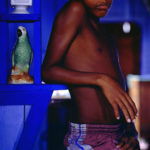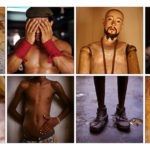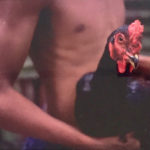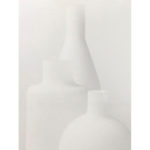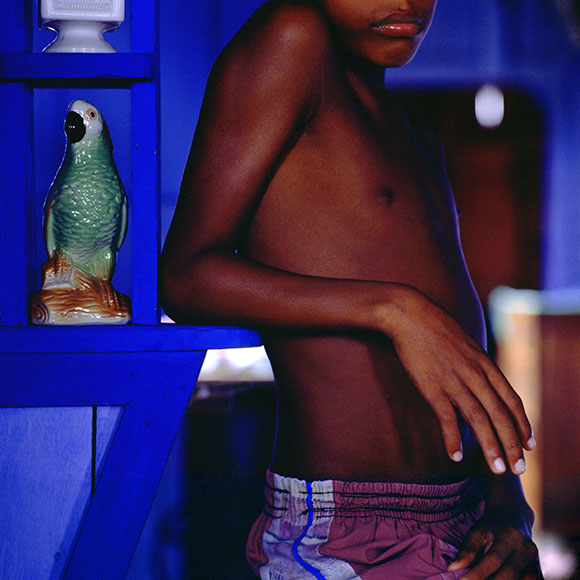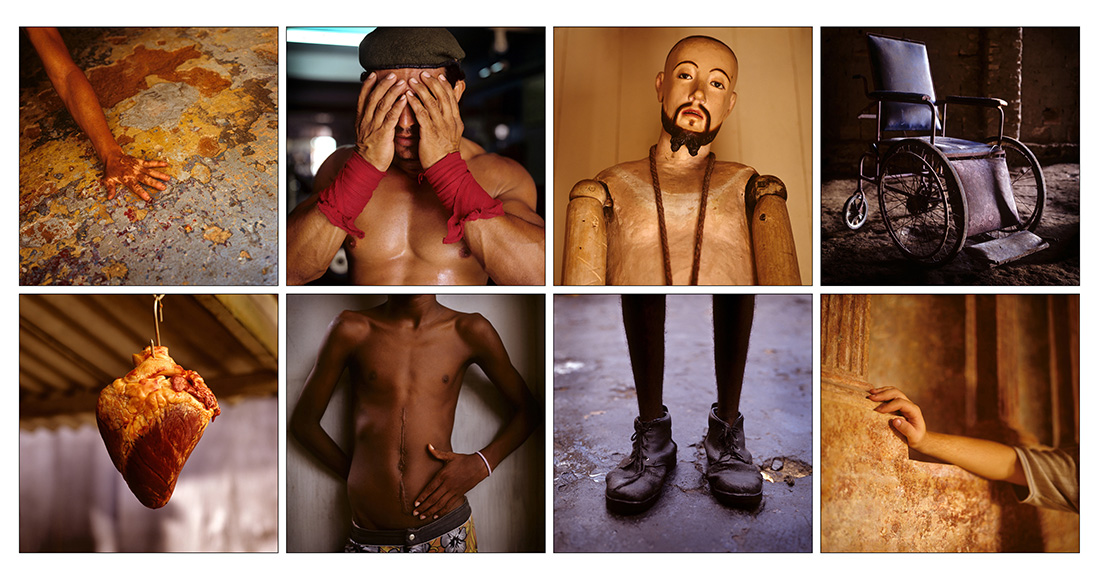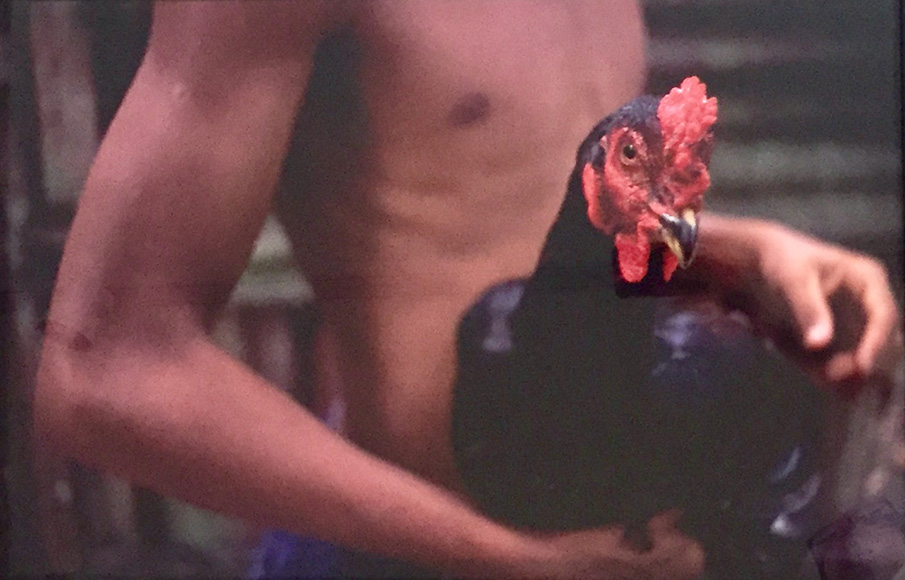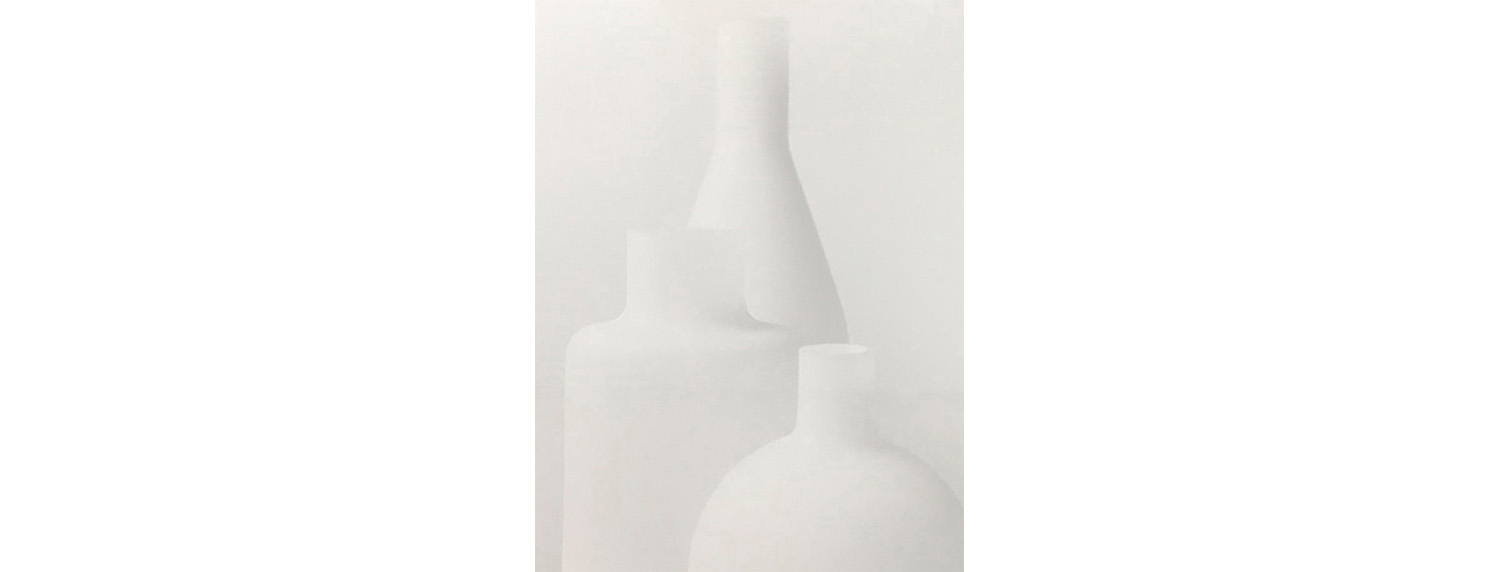In the simple things of the human being and daily life, lies the focus of the searching eyes of those who leave with cameras in hand trying to document the daily life of a city and their people, drawing from each scene, visibly hidden to any ordinary passerby who sees it, a densely symbolic atmosphere in portraying objects, places and people, the trivial things in life, whether it be work or leisure. A document. And for his sequence of shoots, a documentary, with the focus on social observation of a city, a popular world overview – its people, its environments and its streets, its objects -, and these include the representation of the images that this universe already has as an expression, scenes of flower pots, bicycles, interiors, without the physical presence of the human figure, like a portrait, but which, by its light and color, or even by its absence, reveals the human being always present, front and center, portraying the people’s reality. But these pictures go beyond their their focused themes, since we are able to touch other dimensions in them, such as the dedication in the technical field, the framing, the intensity of the colors, resultion from the tension between natural light and artificial light, building images, as he said, “objective and subjective at the same time,” because photography for him is a matter of “you are what you look at” expression and impression, even though the looks and interpretations may later be diverse, and always are, because it is up to the audience, by their own repertoire, to add or remove what brings him or her closer or away from this art.
Márcio Lima was born in Recife, Pernambuco, in 1960. He lives in Salvador, Bahia, since 1989. Has works in the collections from Museu de Arte Moderna da Bahia; Light Work – Syracuse, New York; MASP/Pirelli – Museu de Arte de São Paulo. His work has won the following awards: 2004, 12nd Salão do Museu de Arte Moderna da Bahia; 2003, Pierre Verger National Photography Award, Secretaria de Cultura do Estado da Bahia; 1996, Light Work Artist in Residence Program Award, Syracuse University, New York; 1987, Fotografia do Carnaval de Olinda, Pernambuco – 1st and 2nd place –, Imagem do Carnaval Popular de Recife, Pernambuco – 1st, 2nd and 3rd place.
What made you choose photography as your art expression?
I believe it is because I have seen in it the easiest way to express myself. It’s like if I have photographed before. Probably since the first time I photographed. I started photographing for newspapers and magazines and I’m still doing it. But it always felt too commissioned. When I decided to go out on the streets and photograph my point of view, my impressions about life, that’s when I began to appreciate the simple things of everyday life.
When have you started as a professional photographer?
I started photographing in the early 80’s, when I stopped all my amateur experiences of painting and making installation art. I would take my photographer brother-in-law’s camera and start playing with it. And to this day, I have never stopped playing. That’s my start.
Is photography a visual matter or a technical field? A process of sensitivity and creation over images or a laboratory work?
I think my work has both: technical mastery and visual aesthetics. As for the use of laboratory manipulation, I use very little. I photograph my personal work with chrome, from there on I make decisions like color density and framing when shooting.
How do you capture images? Are they from the street, not from studios? And what does your photography tries to reproduce when captured?
I look for simple pictures of a people. Images that go unnoticed by most people, or that are trivial aspects in everyday life which draw attention to their beauty after being portrayed.
Is there a main theme in your photography? The human being? Social life? By the way, do you seek a theme during the creation of your photos?
The human being is the theme. Often physically present in the images and sometimes in a symbolic way, through the portrayal of their objects, the places where they live, where it is possible to picture them.
How would you read your photos? Are they lyrical? Dramatic? Realistic? Documental?
I would say that they carry a little bit of everything.
Do you see photography as a form of objective expression about facts, scenes, people and events, or subjective, a precise and precious look, a reflection of the experience, involvement and mindset of the photographer?
If you want to photograph anything, you have to be involved. I see photography as both objective and subjective at the same time. Like life. Things are photographed with the political view you have of them. The way you look at it is what you are.
What is the distance, if any, between the photographer and the photo?
I think there is no distance whatsoever, one thing is inside the other.
Following the previous question, is there judgment in your photos? A decision left for the observer in its creation? Or is it opened for interpretation? The photo as a path to understanding, a quest for humanization?
Photography is like poetry and songs. It brings within it several glances, even the most objective of them can be interpreted in different ways.
Is there any dilemma between B&W and color in your work? If so, why?
There isn’t any dilemma.
What are your works in progress? What do they have in common?
For now I would say there are the colors and the human beings, the human beings and the colors. I see a slight change coming up, but I still don’t know which way it’s going.
(Interview/February 2008)


